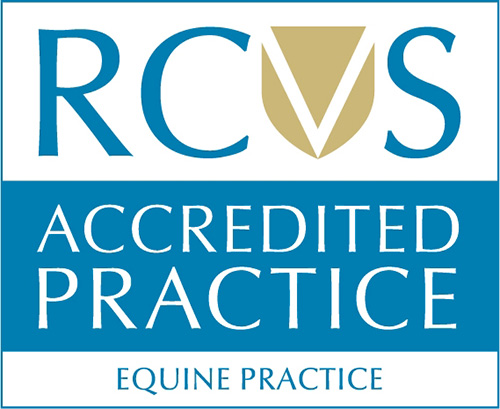Osteoarthritis
Osteoarthriitis is characterised by degeneration and loss of normal cartilage and inflammation within a joint. ‘Osteoarthritis’ comes from the Greek words oeteo (bone) arthron (joint) and the suffix ’itis’ means inflammation. Joints are found where two bones meet and are made up of layers of connective tissue and fluid which enable movement. The cartilage within the joint provides almost frictionless movement whilst the bone beneath the cartilage is known as sub-chondral bone. Changes to this bone are seen on x-ray with osteoarthritis.
In both humans and horses, the relationship between pain and severity of osteoarthritis is not well correlated. For example, severe joint pain can be present with no changes evident within the joint on x-ray examination, and conversely there may be signs of severe osteoarthritis on x-rays but no evidence of lameness in the horse.
Although cartilage does not have any nerve supply to it, joint pain arises from the many nerve endings within adjacent tissues such as the joint capsule and joint ligaments in addition to the adjacent bone.
Osteoarthritis can occur due to:
- Traumatic damage to the cartilage - This can only be diagnosed definitively with MRI and the long-term prognosis is guarded.
- Joint capsule or ligament trauma - This usually presents as a sudden onset severe lameness.
- Sub-chondral bone trauma - These cases tend to respond poorly to intra-articular medication.
- Bone cysts - These can communicate with the joint and can then lead to osteoarthritis and are seen on x-ray examination but are rarely a cause of arthritis.
- Fracture - A fracture that involves the joint can result in secondary arthritis due to disruption of cartilage and bone.
- Joint Infection - Arthritis can also occur secondary to a joint infection due to the associated inflammation. This can occur, for example, after a penetrating wound of the joint.
Joint pain is diagnosed by ‘blocking’ the joint with local anaesthetic as part of a lameness investigation. It can also be possible to feel (palpate) swelling of certain joints and this inflammation of the joint which can be a sign of osteoarthritis. Once the lameness has been localised to a joint using a ‘joint block’, x-rays of the region are usually acquired.
Changes that are seen on x-ray in joints with osteoarthritis include ‘osteophytes’ which are bone ‘spurs’ at the joint margins. Joints can appear narrower on x-rays if the cartilage is damaged and lost and this is a sign of arthritis. Thickening or absorption of the bone beneath the cartilage (sub-chondral bone) is also commonly seen with osteoarthritis. MRI can also be used to evaluate the cartilage within certain joints and the ligaments associated with the joint. MRI enables evaluation of ligaments and cartilage as well as bone, whereas x-rays only allow visualisation of the bone.
Non-steroidal anti-inflammatory drugs (NSAIDs) such as ‘Bute’ or ‘Danilon’ have been the mainstay of treating joint disease for many decades. This is, however, not acceptable in horses that are competing. If a horse is not competing and is suspected to have osteoarthritis in multiple joints, it may not be practical to use intra-articular medications, and giving the horse oral medication may be the better option to manage the condition.
Osteoarthritis is routinely treated using intra-articular corticosteroid injections. Intra-articular steroids were introduced in the 1950s. Corticosteroids are very strong anti-inflammatories that reduce the inflammation which causes the pain and lameness associated with osteoarthritis. Hyaluronic acid can be used in conjunction with corticosteroids, this encourages the production of proteins normally present within joint fluid and can be considered to be a ‘joint oil’ replacement and to encourage ‘joint oil’ production (synovial fluid). Maximal effect of the steroid injection usually occurs about 1-2 weeks after injection. After the horse has had the joint medicated, two days of rest are required followed by a controlled exercise programme.
Arthamid (Polyacrylamide Gel) can provide long term results in certain cases of osteoarthritis. The gel is injected into the joint to provide lubrication and cushioning and helps to re-establish healthy joint lubrication.
In addition, joint supplements containing oral glucosamine and chondroitin sulphate can help slow and alleviate the signs of osteoarthritis. Some supplements also include Boswellia which is a natural herbal anti-inflammatory which is also FEI permitted. Devils claw supplement has been used as a natural anti-inflammatory but is not FEI legal in competition horses.
Other drugs such as ‘Cartrophen/Osteopen’ (pentosan polysulphate) which is given as an injection into the muscle can help keep the horse sound by slowing the degenerative changes within the joint and by having anti-inflammatory effects.
Corrective shoeing to ensure good foot balance is critical in the management of horses with lower limb joint pain.
Osteoarthritis cannot be cured as cartilage cannot regenerate, but in most cases the symptoms can be suppressed to enable the horse to become sound and to continue in work or have a comfortable retirement. Horses that have been successfully treated for arthritis may continue a full athletic career, but it may be necessary to repeat the joint injections in the future at variable intervals.
It is especially important in horses that are known to have osteoarthritis but are still in work to have regular consistent exercise to aid the muscular and soft tissue support of the joints. Regular physiotherapy and chiropractic treatment can also help maintain normal range of movement and help treat any secondary muscular ‘tightness’.
In summary, osteoarthritis is a common problem especially in older horses but can generally be managed effectively with appropriate veterinary and owner intervention.
To view/download a copy of this information in PDF format, please click here.
-
Previous
-
Next

